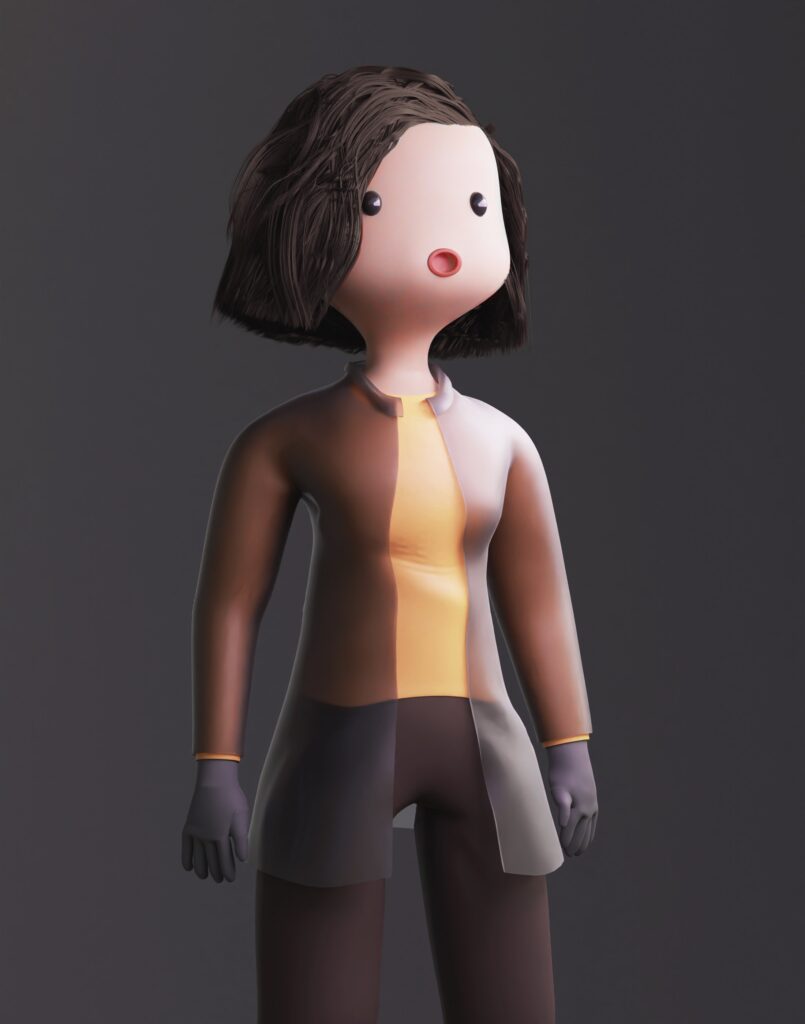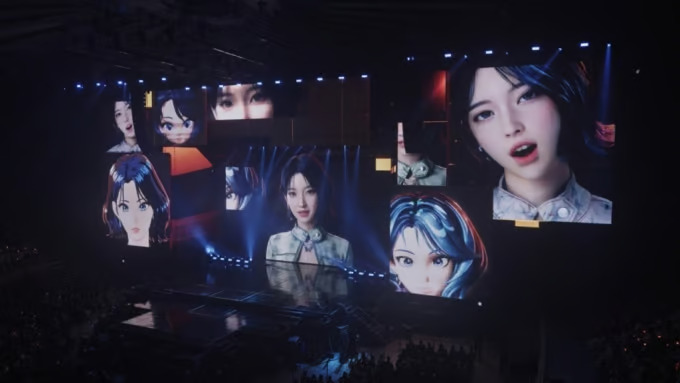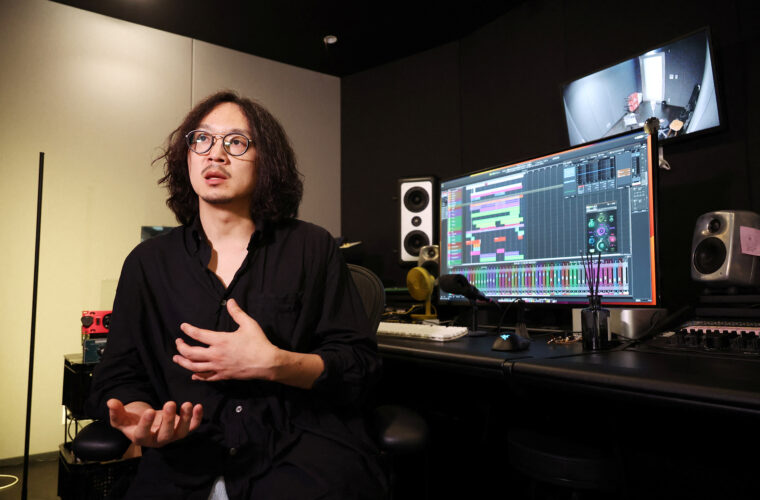Following the metaverse boom, several K-pop virtual idol groups have debuted in the K-pop scene. These groups consist of avatars that are often powered by artificial intelligence, 3-D computer graphic, or deep fake. Behind such avatars, some humans do the voices and enactment. As a few groups reach high ranks on Korean music charts, some wonder whether the virtual idol trend is here to stay.
Virtual Reality and K-Pop
One of the most successful cases of a virtual idol group would be Isegye Idol, a sextet that kicked off its K-pop career in December 2021. The group is part of a project made by Korean gamer and YouTuber Woowakgood, to make a girl band with cartoon-like appearances. Using motion-tracking technology, the avatars move the same way as the human operators do. Their debut single “RE: WIND” amassed over 14 million views on YouTube, and ranked at the top in a few music charts.
Another group that gained people’s attention was Revolution Heart, a boy band also built on 2-D avatars with actual humans behind them. The band made their way into the K-pop scene in July 2021. Their debut showcases were done at cinemas in Wangsimni, Seoul, with a total of 1,100 people present at the sites.
Compared to virtual humans, or digital humans, in other words, these characters are enacted by actual humans. They don’t follow a programmed script to talk, sing, or dance – they are artists masked by computer graphics and appearances that either look like humans or cartoon characters.
Compared to human idols, one of the strongest advantages that virtual idols have is their active interaction with fans. Human idols usually can talk to their fans directly on livestreams at certain scheduled times only when their agencies allow them to, and cannot even do them often as they would have other schedules such as concerts or live performances. However, a virtual world is not limited by physical time or space; digital idols can talk to their fans as long as they have motion-tracking cameras and other equipment ready. In often cases, the artists also work as live-streamers on YouTube or Twitch at the same time, strengthening their bonds with the fans.
Technologies That Operate Virtual Stars
Until 2022, the virtual avatar bands that grabbed the public’s attention in Korea seemed to have looks similar to popular VTubers – cute cartoon-like faces with big eyes. VTubers is short for Virtual YouTubers, who have a virtual character for making content.
The technology the virtual idols use for their debuts also appears to be not much different from VTubers.
VTubers would work together with designers or illustrators to come up with an original design of a character. If it is a 3-D model, some designers use Blender, a 3-D modelling software. They would then collaborate with refiners and technicians to enable the character to track the movements of the creator. This process is called “rigging” among Korean creators and is often described as “building the bones and muscles” of a character. When they have their character ready, they can also check out the assets available on BOOTH, a market-like platform for virtual avatars with items and ready-made character models.
Once the character is ready, the next step is running it live. Most VTubers operate their characters on a personal computer, and they don’t have to be with the highest specs – engines to bring a character to life can run on gaming computers, too. After downloading facial tracking software and installing a webcam, the basic equipment is ready. For full body-tracking, some VTubers buy more advanced devices and software like VIVE, with prices ranging from 200,000 won ($US 150) to a couple of million won.

Virtual girl band Isegye Idol also purchased their initial character designs at BOOTH. As ready-made models on the platform can be used by any other users as well, the band says they’re in discussion to obtain the rights of the characters they use. Instead of webcams, the members kicked off their livestreams and other content with iPhones to track their facial expressions. For music videos, the artists do full body-tracking and perform as avatar-selves.
Stepping Up to the Main Stage
Game developers and entertainment agencies are emerging as new players in the virtual idol competition in South Korea.
For example, Korean tech giant Kakao Corp. launched a 12-part digital idol survival show titled “GIRL’S RE: VERSE” in January 2023 through its subsidiary company Kakao Entertainment. The show featured 30 virtual contestants competing to be ranked in the top five to debut as a K-pop band.
The show first received some negative feedback from the viewers. As the news of ex-idols participating in the competition spread, several K-pop fans questioned if they must see the contestants as whole different people from what they have previously known. In addition, the show had to postpone its airing date due to the copyright issues of the avatars. The designs they used for contestants were ready-made avatars available on BOOTH, so the production had to settle on copyright problems before the official airing on YouTube.
Despite the controversy, the program successfully ended on 6 March 2023, introducing its first-ever idol band of five members, Feverse. The group is slated for debut on May 9 with their title song “CHO”, allegedly produced by well-known K-pop composers and choreographers.
Metaverse Entertainment, a subsidiary of Netmarble, one of the leading game developers and publishers in South Korea, also debuted their first virtual group MAVE:. The four-member group, who have hyper-real appearances, released their first song “PANDORA” on 25 January 2023, and gained more than 21 million views on YouTube.
What’s interesting about this group is how similar their promotion strategies are to human bands. For example, the group performed on a CGI replica of a real-world performance stage at a popular music program multiple times. They uploaded a dance challenge that fans can try on social media and made a tutorial of cheering for fans, similar to how other K-pop bands would do.
There also are boy bands like PLAVE, whose members are all digital avatars, and SUPERKIND, a mix of real human artists and virtual characters, that garnered the public’s attention in recent months in the country.
The popularity of virtual idols is fueled by the development of AI-powered technologies, mostly supported by teenagers, experts say. Culture critic Kim Heon-sik told Yonhap that digital bands seem to win people’s hearts as people became more used to interacting with others on the internet since the pandemic.
“Interacting with their fans via their replicated, multi-avatar-selves, the virtual idols are overcoming the limitations of human idols,” Kim was quoted as saying. “Characters that we used to see in games and animations are now stepping into the music industry, meeting more fans through various activities.”
However, still a niche sector in the market, the trend might fade away when people feel less intrigued by the novelty of the technology unless the virtual bands manage to become part of the mainstream. “The challenges for the bands are overcoming the ‘uncanny valley’ phenomenon and making more hit songs to be at the centre of our culture,” Kim added.


